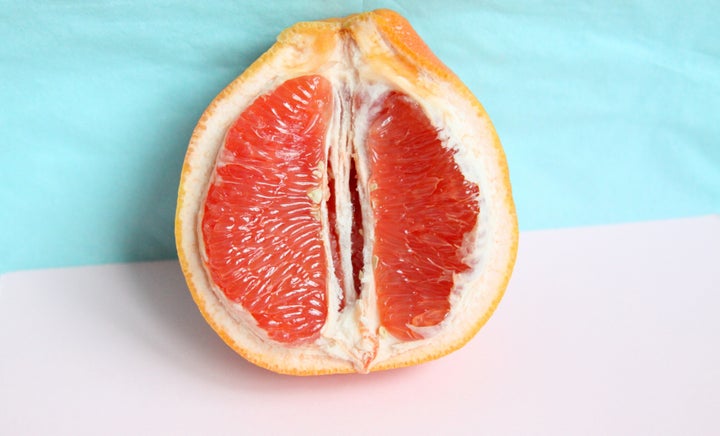
There are lots of things we’re told about pregnancy, but when it actually happens to you, you realise there’s so much more to learn. In Unexpected, we’ll chart some of the less spoken about things that happen in the months between finding out you’re pregnant and giving birth.
The perineum is a body part that many are blissfully unaware of until they’re some way into their pregnancy.
In fact, some pregnant people never find out about it. A survey by My Expert Midwife found more than one in three (36%) women who have given birth do not know where their perineum is.
For those who remain blissfully unaware, the perineum is the skin and muscular area between the anus and the vagina.
During a vaginal birth, this delicate area stretches and is therefore prone to tearing, which is where perineal massage comes in. The idea being that you start stretching the area before you’re ready to give birth.
“During vaginal birth around nine out of 10 first time mums and seven out of 10 mums having subsequent births will have some type of damage to their perineum,” Lesley Gilchrist, registered midwife and co-founder of My Expert Midwife, tells HuffPost UK.
While some of the risks of tearing are predetermined by your genetics, the position of your baby and the position you’re in during labour, there are things you can do to try and reduce the severity of tearing – and massaging your perineum is one of them.
“It is useful to understand that the perineum, which is part of the pelvic floor, is a thick muscle which needs to thin down to paper thin during crowning for the birth,” says Gilchrist.
“Regular perineal massage helps these tissues to become softer and more elastic in preparation for birth, thus less likely to sustain a more severe tear.”
How to do a perineal massage
Research recommends pregnant people can start perineal massage from 34 weeks of pregnancy – try to do it at least three times per week, for around three to five minutes at a time.
While you could do the massage without oil, it’s generally recommended that you use some form of lubrication to prevent chaffing and for general comfort. Oil can also help to maintain skin integrity.
There are lots of perineal massage oils on the market by companies like Natural Birthing Company and My Expert Midwife. Alternatively, you can use natural oils like vitamin E oil, coconut oil, olive, sunflower or grape seed oil, according to NCT. Just avoid synthetic oils such as baby oil or petroleum jelly.
Before you try the massage – which, just a heads up, requires some internal rummaging – you’ll want to get into a comfortable position. Obviously large baby bumps aren’t really conducive to being able to reach that area, so you might have to get creative or get your partner involved.
“I would suggest trying out several different positions to see which seems to provide the easiest reach to your perineum,” says Gilchrist, “as everyone is different, has varied baby bump sizes and flexibility.”
You could try sitting on the toilet and reaching around the front or from behind, or you could try a supported squat, where your partner supports you under your arms so you can reach your perineum. You might find it helpful to pop one foot up on a chair or on the side of the bath so you can reach underneath.
It’s all about creating an environment where you have privacy, won’t be interrupted and where you feel safe and comfortable.
If you feel a bit weird roping your partner into doing the massage for you, that’s totally understandable – but it might be helpful to remember why you’re doing this. “Learning more about how and why doing perineal massage can help during birth may encourage women and their partners to see this as a really beneficial part of preparing for birth,” says Gilchrist.
“If it is seen as helping to reduce the likelihood of perineal trauma and something which can then help recovery after childbirth to be easier, both women and their partners may be more likely to try it.”
Now for the fun bit. First things first, make sure you – or your partner – have clean hands and short fingernails. You might want to empty your bladder too.
According to the Natural Birthing Company, some women find a mirror handy to help visualise the area, while others like to do the massage after a bath or shower.
Place a couple of drops of oil onto your fingers and apply to the outside of your perineum.
Next, place your thumbs about two inches into your vagina, advises the massage oil company. “Press downwards with your thumbs in the direction of your anus so that you can feel the stretch of the muscles surrounding the vagina and the vaginal tissues.
“Once you have this downward pressure, use your thumbs to sweep from side to side in a rhythmic ‘U’ shape/hammock movement. Whilst massaging the perineum from the outside with your other fingers.”
During the massage, apply steady pressure towards the anus but don’t overdo it – it shouldn’t hurt. Gilchrist suggests pressing until you feel a slight burning, stretching sensation. “If it is painful then stop,” she adds. “You need to build up gradually, not suddenly, as this prepares the tissues better and helps you to feel more relaxed and more likely to continue.”
Initially it’s likely the perineum will feel quite tight however over time the tissues should stretch and relax.
The Natural Birthing Company advises that if partners are performing the massage, they should follow the same instructions but should use their index fingers (instead of thumbs). You need to communicate with them about how much pressure is comfortable.
And hopefully, when the time comes for your baby to make an appearance, any tearing down there will be greatly reduced by your at-home massage sessions.
